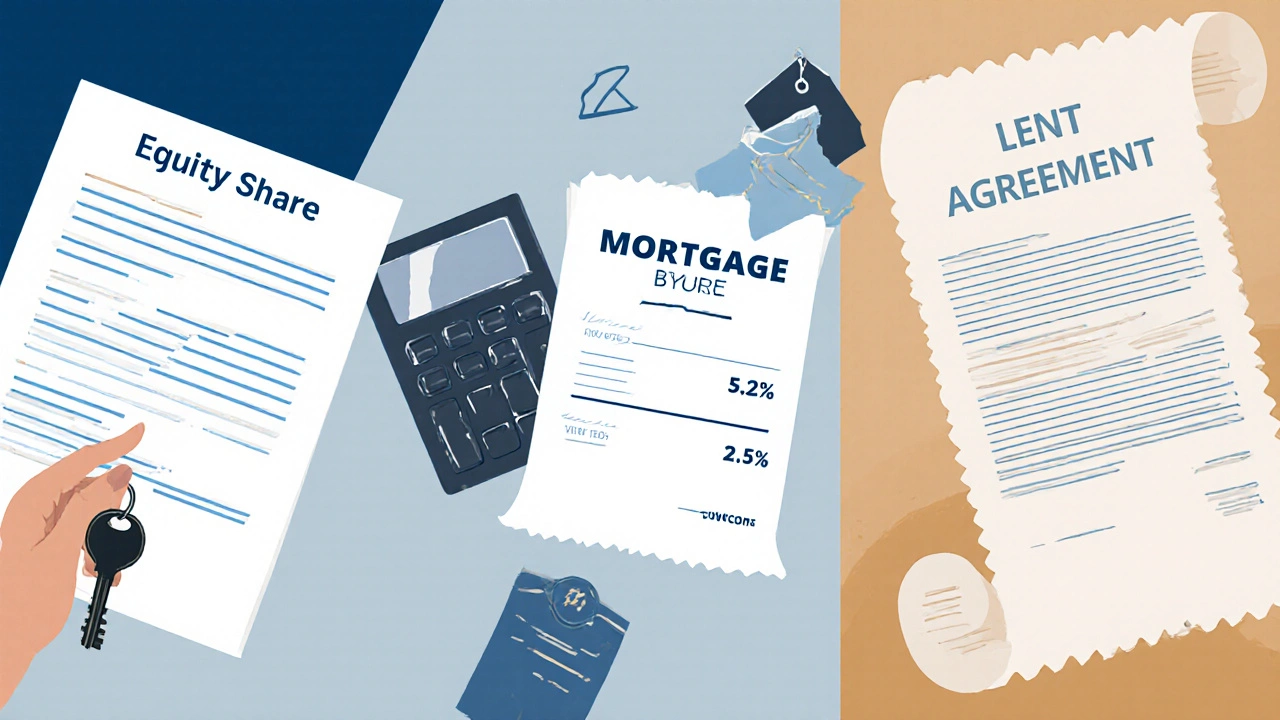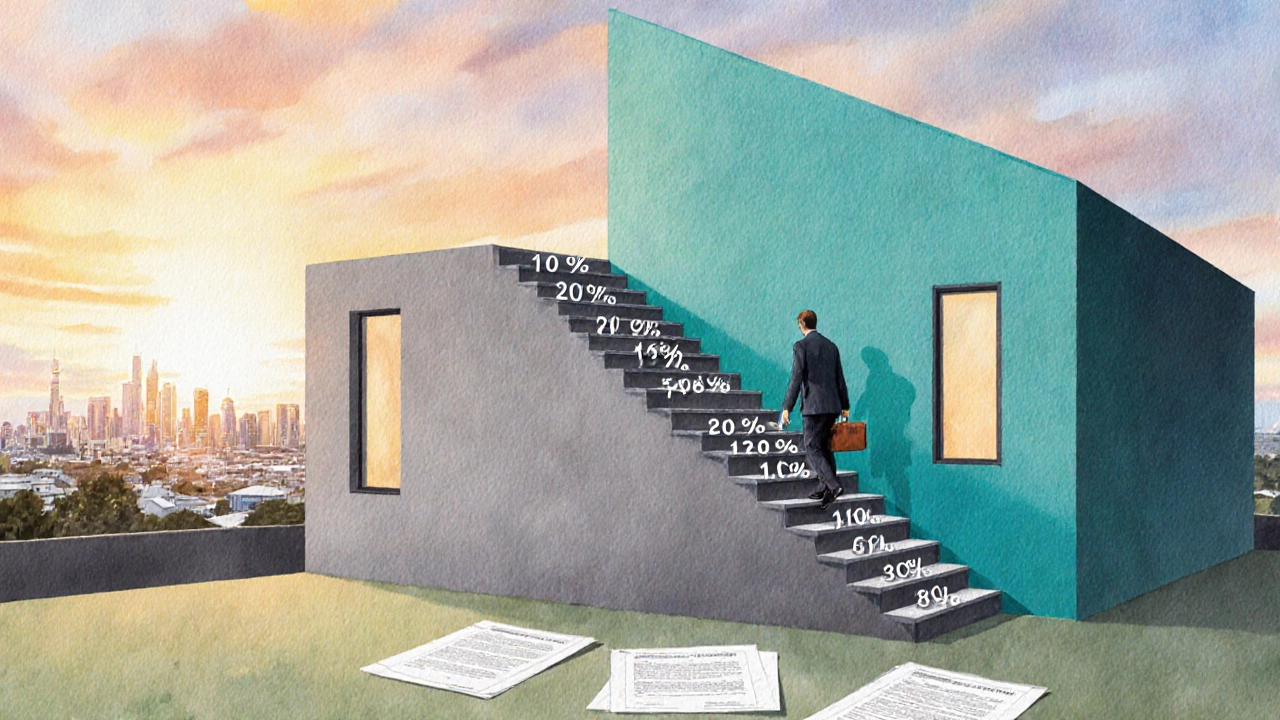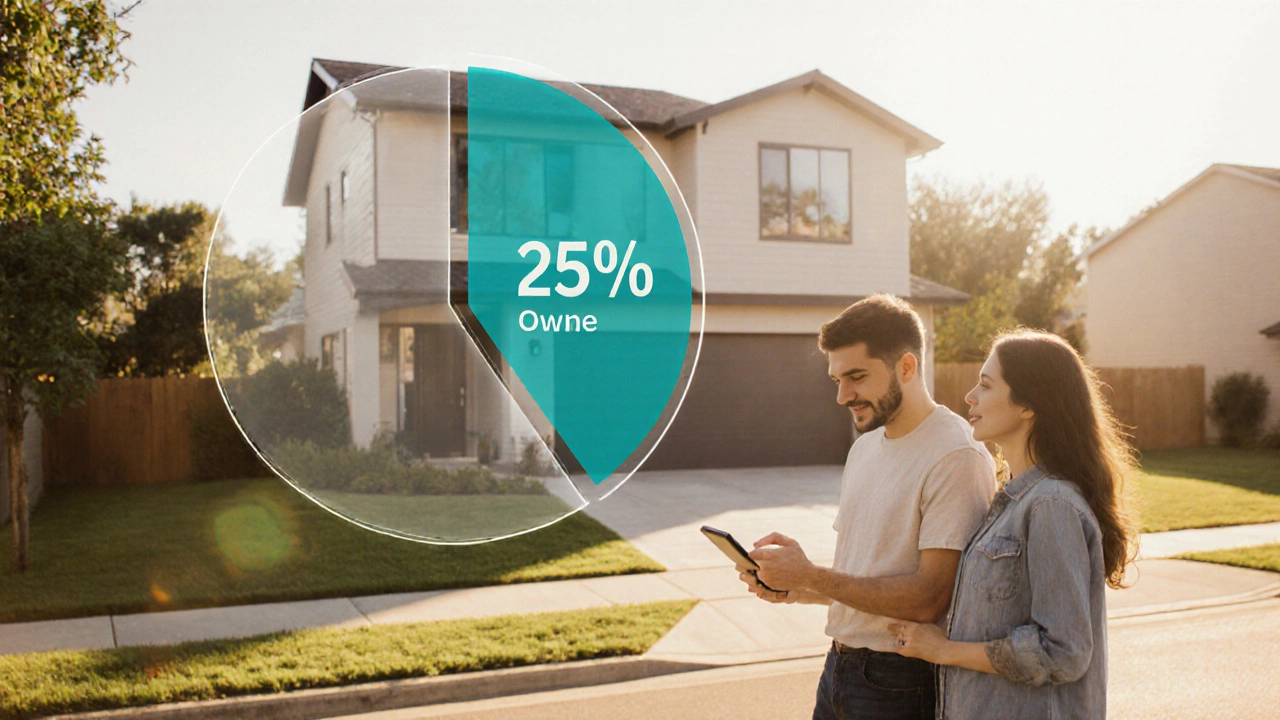Shared Ownership Calculator
Your Investment
Monthly Costs
Compare to Full Ownership
Full ownership monthly cost: NZ$2,850 (5.5% mortgage on NZ$500,000)
You'll pay NZ$940 less per month than full ownership
Current Property Value
NZ$500,000
Cost to Buy
NZ$50,000
Buying 10% will cost approximately NZ$50,000 at current value
This reduces your rent by approximately NZ$125 per month
When you hear share of ownership the percentage of a property you actually own under a shared‑ownership arrangement, it can feel vague. This article strips away the jargon, shows you how the numbers work, and gives first‑time buyers a clear road map.
What Exactly Is a Share of Ownership?
A share of ownership the proportion of a home that a buyer purchases outright is expressed as a percentage of the property's market value. If a house is priced at NZ$400,000 and you buy a 25% share, you own NZ$100,000 worth of equity while the remaining 75% stays with a housing provider or private investor.
How a Shared Ownership Scheme Works
A shared ownership scheme a government‑backed program that lets buyers purchase a portion of a home and rent the rest typically involves four moving parts:
- An equity share the slice you buy and own (e.g., 25%, 50%).
- A mortgage a loan to cover the equity share from a bank or mortgage lender.
- Rent on the remaining portion, paid to the housing provider.
- A leasehold agreement the legal contract governing the rented share.
These components sit side by side, meaning you’re simultaneously a homeowner (for your share) and a tenant (for the rest).
Key Financial Elements
Let’s break down the costs with a realistic example from Auckland’s current market.
- Property price: NZ$500,000
- Chosen equity share: 40% (NZ$200,000)
- Mortgage rate: 5.5% fixed for 5 years
- Monthly mortgage payment: around NZ$1,140 (principal + interest)
- Rent on remaining 60%: NZ$650 per month (typically 2.5% of total price)
- Service charge & insurance: NZ$120 per month
Adding those figures, the total monthly outlay is roughly NZ$1,910. Compare that with a full‑ownership mortgage on the same house at a 5.5% rate: about NZ$2,850 per month. The shared‑ownership route saves you roughly NZ$940 each month, at the cost of never fully owning the property until you stair‑casing.
Stair‑casing: Growing Your Share
Stair‑casing lets you buy additional percentages over time, usually at the current market valuation. If after three years the house is valued at NZ$530,000, you could purchase another 10% for NZ$53,000, reducing your rent accordingly.
Most schemes require a minimum purchase increment of 5% and allow you to stair‑case up to 100% ownership, provided you meet lender criteria.

Benefits for First‑Time Buyers
For a first‑time buyer someone purchasing their first home, often with limited savings, the main advantages are:
- Lower deposit: you only need a percentage of the full price (typically 5‑10%).
- Reduced monthly costs: mortgage + rent is often cheaper than a full mortgage.
- Access to new builds: many developers allocate units specifically for shared ownership.
- Potential to build equity faster than renting outright.
However, you should also weigh the downsides, such as renting the remaining share, possible restrictions on sub‑letting, and the need to obtain lender approval for stair‑casing.
Legal and Valuation Considerations
The property valuation the professional assessment of a home's market worth is critical at purchase and each stair‑case step. Valuations are usually conducted by an independent valuer approved by the housing provider.
Legal paperwork includes:
- The sale and purchase agreement for the equity share.
- A lease agreement for the rented portion.
- The mortgage deed securing the loan.
Because you own only part of the property, any major renovations often require consent from both the housing provider and the mortgage lender.
Comparison: Share of Ownership vs Full Ownership vs Renting
| Aspect | Share of Ownership | Full Ownership | Renting |
|---|---|---|---|
| Initial deposit | 5‑10% of market price | Typically 15‑20% | None |
| Monthly cost | Mortgage on share + rent on remainder | Mortgage only (higher) | Rent only |
| Equity build‑up | Gradual via stair‑casing | Immediate as you own 100% | None |
| Control over property | Limited - need consent for major changes | Full control | Tenant rights only |
| Risk if property value falls | Equity share may lose value, but rent still payable | Full exposure to market swing | Rent may increase, but no equity loss |
Use this table to see which route aligns with your financial situation and long‑term goals.

Common Misconceptions About Share of Ownership
- “You never own the whole house.” Not true - stair‑casing lets you eventually own 100% if you choose.
- “Rent payments are a waste.” The rent covers the portion you don’t own and is often lower than a full mortgage.
- “You can’t sell your share.” You can sell, but the buyer must be approved by the housing provider.
Next Steps for Prospective Buyers
1. Check eligibility - most schemes require income below a certain threshold and that you’re a first‑time buyer. 2. Calculate affordability - use the example numbers above as a template. 3. Speak to a mortgage adviser - they’ll confirm the loan size you can secure for your equity share. 4. Visit a shared‑ownership development - see the properties, meet the provider, and ask about stair‑casing terms. 5. Arrange a valuation - before signing, get an independent valuation to avoid overpaying.
Following these steps will give you a realistic view of how a share of ownership fits into your path to homeownership.
Frequently Asked Questions
Can I increase my share of ownership later?
Yes. The process is called stair‑casing. You can buy additional percentages at the current market value, usually in increments of 5%.
What happens if I want to sell my share?
You can sell, but the buyer must be approved by the housing provider. The provider may also have a right of first refusal.
Do I need a deposit for the equity share?
Typically you need a deposit of 5‑10% of the equity share’s value, not the full property price.
Are there restrictions on what I can do to the rented portion?
Yes. Major alterations usually need permission from the housing provider and the mortgage lender.
How is the rent amount calculated?
Rent is typically set at a percentage (around 2.5%‑3% per annum) of the market value of the portion you don’t own.
